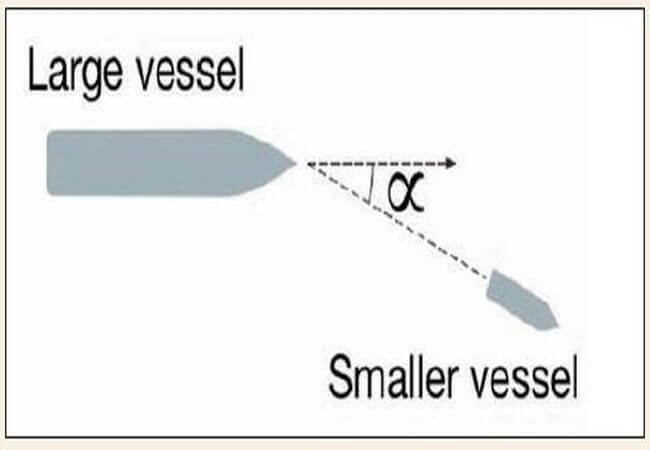....βοηθάει να διαβάζετια , όσοι μανουβράρετε σε στενα
marineinsight
A laden tanker drawing 12.75m was inbound in a restricted waterway. It was being conned near the centre of the main channel at a speed of about 7.5 knots. On the starboard side, outside the main channel, was a secondary channel used by smaller vessels such as tugs and barges.
The tanker’s bridge team had observed, by radar, a tug pushing a barge in the secondary channel about 6 nautical miles ahead and they were due to overtake the tug in the near future. An agreement was reached between the pilot of the tanker and the tug Master. The customary arrangement is that the tug and barge assume an angle (a) with the channel as the larger ship overtakes in order to reduce hydrodynamic effects and retain manoeuvrability, as shown in the diagram below.

As the two vessels began to close, the tug and barge were seen to be
at the limit between the secondary channel and the main channel (if not
totally in the main channel), and the tug-barge combination had not
taken the expected angle to reduce hydrodynamic effects. As the tanker
approached, the tug Master reported difficulty steering. During the
overtaking manoeuvre, the tug Master was unable to control his vessel
and the barge. The units sheared to port and made contact with the stern
of the tanker.
marineinsight
A laden tanker drawing 12.75m was inbound in a restricted waterway. It was being conned near the centre of the main channel at a speed of about 7.5 knots. On the starboard side, outside the main channel, was a secondary channel used by smaller vessels such as tugs and barges.
The tanker’s bridge team had observed, by radar, a tug pushing a barge in the secondary channel about 6 nautical miles ahead and they were due to overtake the tug in the near future. An agreement was reached between the pilot of the tanker and the tug Master. The customary arrangement is that the tug and barge assume an angle (a) with the channel as the larger ship overtakes in order to reduce hydrodynamic effects and retain manoeuvrability, as shown in the diagram below.

Image Credits: nautinst.org
Lessons learned
- Overtaking is a challenge in narrow channels; it requires proper planning well in advance, which should include contingency plans.
- The intensity and effect of hydrodynamic forces cannot be accurately assessed due to the nature of the channels and confined waters.
- In overtaking situations the difference in speed between the two vessels should be as great as safety and prudence will allow. This will reduce the time the hydrodynamic forces are acting on the vessels and negate the known ‘trapping effect’.
Δεν υπάρχουν σχόλια:
Δημοσίευση σχολίου